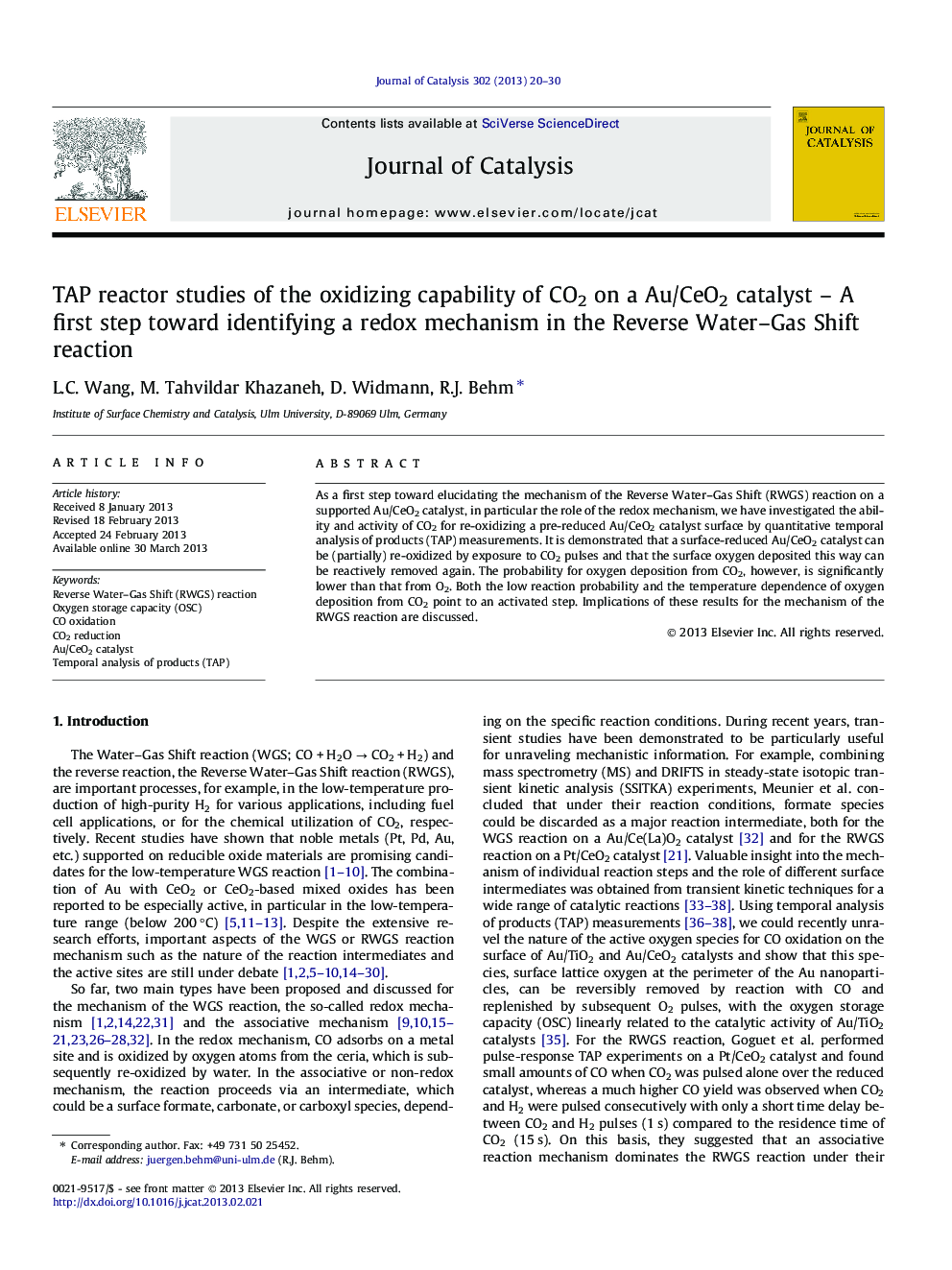| Article ID | Journal | Published Year | Pages | File Type |
|---|---|---|---|---|
| 61236 | Journal of Catalysis | 2013 | 11 Pages |
As a first step toward elucidating the mechanism of the Reverse Water–Gas Shift (RWGS) reaction on a supported Au/CeO2 catalyst, in particular the role of the redox mechanism, we have investigated the ability and activity of CO2 for re-oxidizing a pre-reduced Au/CeO2 catalyst surface by quantitative temporal analysis of products (TAP) measurements. It is demonstrated that a surface-reduced Au/CeO2 catalyst can be (partially) re-oxidized by exposure to CO2 pulses and that the surface oxygen deposited this way can be reactively removed again. The probability for oxygen deposition from CO2, however, is significantly lower than that from O2. Both the low reaction probability and the temperature dependence of oxygen deposition from CO2 point to an activated step. Implications of these results for the mechanism of the RWGS reaction are discussed.
Graphical abstractActive oxygen is formed by interaction of CO2 with a pre-reduced Au/CeO2 catalyst, supporting a redox mechanism for the RWGS reaction at T > 200 °C.Figure optionsDownload full-size imageDownload high-quality image (56 K)Download as PowerPoint slideHighlights► Surface-reduced Au/CeO2 can be re-oxidized by CO2 as a pre-condition for a redox mechanism in the RWGS. ► Active oxygen deposited from CO2 is an atomic species. ► Probability for oxygen deposition from CO2 is significantly lower than from O2. ► Active oxygen deposition rate in the absence of H2 sufficient for a redox mechanism as dominant pathway for RWGS. ► Final decision requires active oxygen deposition rate in the presence of H2 and H2-related adsorbates.
